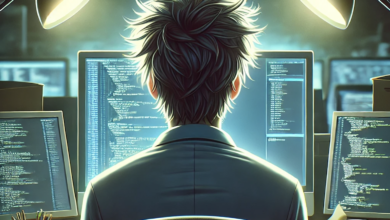One immediate way NFTs & POAPs can change the landscape for businesses is through replacing existing methods of licensure and accreditations such as driver’s licenses, business licenses, professional accreditations such as medical and law licenses as well as basic certifications/degrees. Migrating these items over to the blockchain allows for companies to authenticate globally and can eventually eliminate black-boxed applications that do not allow the employees, consumers, patients, students, etc access to such material.
Defining POAPs & NFTs
First, let’s define what POAPs and NFTs are for those that may be new to blockchain lingo. POAPs stands for “Proof of Attendance Protocol” which was developed at an Ethereum hackathon a few years ago. POAPs act similar to badges or the forgotten Foursquare check-in used when you were sitting at a restaurant to let folks know you were there. The POAPs give an extra level of authentication that you were either there to receive the POAP or at least the authoritative owner of the created POAPs acknowledges that you should have one.
The founder of POAPs, Patricio Worthalter, recently gave an interview explaining “it’s a digital record, a little piece of data that lives on a decentralized network… This little piece of data, this digital record, helps you associate something with a point in time. So this little digital record contains an image and some other metadata. And, that image you can use for remembering what you were, who you were with. And, this little digital record put together between each other and building collections start enabling plenty of utility that goes beyond what anyone could imagine quickly.”
NFTs stand for “Non-fungible tokens” meaning each one of them is unable to be substituted by another. The idea for NFTs also originated at a hackathon back in 2014 by Anil Dash and Kevin McCoy.
During a podcast by Brooke Gladstone in 2021, Anil Dash explained how the idea originated based around tracking original artwork. Dash notes, “If everybody had a copy of the same spreadsheet and you could verify that any change was made was made in all of them, then one of the things you could do is you can keep track of art in there and say, This is this original artwork. This is who made it and this is who owns it.”
NFTs are being utilized in many different ways but have seen an exploding within the art community as artists are able to add their paintings, drawings, photographs, and even music directly to the blockchain. By directly going to the blockchain, artists can bypass traditional galleries and expand their reach directly to buyers via online marketplaces.
While selling art online isn’t a new concept, the ability to implement a smart contract with each piece of art is. These smart contracts allow for an artist to add an item to the blockchain, list it for sale, and then the artist will collect a royalty of continued sales each time the piece is sold from buyer to buyer. This is in stark contrast from artists selling a piece once then never knowing where it goes from that point forward, yet alone capturing any residuals from the piece in the event it continues to sell between buyers.
Both NFTs and POAPs are considered by some as the next generation that will take blockchain technology to the next level as they can store immutable information and can serve as proof-of-ownership on things beyond art such as being physically present or the replacement to a printed certificate for successfully completing a task or class.
What this enables is a prominent way to (instantly) prove access to information that would otherwise be black-boxed and off-limits for the general public as most of this data is currently stored in desperate, internal applications.
From a personal perspective, these items are provided and stored within your digital web 3.0 wallet which is also on the blockchain. What is a digital wallet? A digital wallet is a safe and secure place where you can store your private keys and any other digital assets. One may provide their wallet address to these authenticating parties like providing an email address in order to receive these POAPs/NFTs. Additionally, the authenticating party may openly validate various POAPs/NFTs within someone’s wallet.
This means that regardless of job, location, or change of career, one will always be able to prove what they obtained without having to find paper or email, contact a college for confirmation, or call a prior employer back to confirm any award or certificate. All of this data will be carried with the person and not stored in various disparate locations within private entities.
Corporate Applications
One scenario that many don’t realize these POAPs/NFTs are applicable in is within business settings that want to provide more control over how a certification or badge is provided to someone.
The spectrum in which these POAPs and NFTs within businesses is quite broad. In the simplest form, a POAP may be provided to an employee for showing exemplary commitment to a project, a team project badge, military embroidered patches for specific operations, or simply recognition such as employee-of-the-month.
More specifically, tokens can be used for confirming successful completion of tests or job functions which may allow for company advancement, a raise, or other benefits. As an example, the cybersecurity department may award a POAP for completing routine cyber training which would allow the company to quickly identify who or who doesn’t have a consistent track record. Additionally, it allows the employee to carry that badge inside their personal wallet even in the event they move to a different job at a different company.
Another example is within job recruitment via setting required badges to be inside someone’s wallet applying for a job versus solely relying on someone’s personally written resume. Various online application companies such as Indeed.com may one day provide businesses the ability to query or filter applications based on various badges awarded by other companies such as Microsoft certifications, college degrees, and/or professional licenses that can show consist awards of a POAP without a gap between renewals (i.e. a doctor has received a POAP consistently over 10 years from the American Medical Association).
Professional, Governmental, & Personal Licensures
Other uses outside of corporations and art may be centered around authenticating your experience and registrations with various organizations such as a driver’s license and educational degrees. Instead of a paper degree to hang on the wall, one may soon receive an NFT version of that degree which would be stored in the wallet for someone to have in their possession forever. This consolidating of records creates more concentration of one’s experiences whether in the digital/meta space or obtained in the real world (IRL).
It is only a matter of time before you will have direct access to your records directly from the blockchain similar to how various companies are providing access to their records via mobile apps such as car insurance documents and even rewards/member cards such as AAA and Marriott. The only change is that these records will be in your blockchain wallet, and owned by you, versus only accessible via a request or app to the issuing entity.
Voting Possibilities
An even more practical application of blockchain can be found in voting with the replacement of the “I Voted” sticker as a POAP. This would allow voting to authenticate to someone’s wallet and can confirm if the vote has been placed or not.
While this does create a bit of authentication in the voting process, there is still many authentication angles to consider such as proper identification of the voter, and getting those users who believe blockchain provides a layer of anonymity to now register their wallet with a governmental agency. In addition to using the blockchain record to vote, a person could simply be a trusted voter who can be called upon in the case of an emergency. There is also the concern of how this would affect the voting process and what security measures would need to be taken for a trustworthy POAP.
Integrated with Digital ID
While POAPs are on their own merit, the most interesting aspect of NFTs is their ability to be integrated with a digital identity. A digital identity can help a user control personal information, protect themselves from identity theft, and have more control over their finances. A user’s digital identity can then be linked to other important pieces of information such as health records stored in healthcare databases or credit information stored in credit agencies databases.
Again, many blockchain purists may rally against such a close connection to blockchain identity and governmental oversight; however, other services that have arisen as part of the blockchain space such as ENS provide web 3.0 registration of something similar to owning your name as a dot com in web 2.0. As the space evolves, it seems more and more folks will end up using some wallets as public-facing that also include their identification such as my name, aaronvick.eth, which I have secured on the blockchain via the Ethereum Name Service (“ENS”).
Conclusion
As Web3.0 continues to develop through advanced ways of utilizing POAPs and NFTs, we should see bigger brands begin to adopt creative ways to connect with consumers. Additionally, this technology will begin to replace the myriad of paper trails and disparate digital record-keeping people from having their historical records with them and owned by them at all times.





